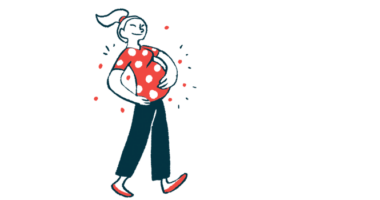How my husband and I prepared for my pregnancy with PNH, Part 1
What our family planning looked like after my PNH diagnosis

First in a series.
Receiving a diagnosis of paroxysmal nocturnal hemoglobinuria (PNH) in 2019 left me confused, scared, and desperate for more information. As my mom checked me out at the medical office counter, I did a quick Google search and scanned the first article I found.
Reading it felt like a scene from a movie where keywords like “life-threatening,” “chronic,” “IV infusion,” “blood,” and “needles” popped out in bold type.
I was numb until I read something that stopped me in my tracks: PNH patients were not advised to have children. Growing up, I always knew I wanted to bear a child, so reading those words shattered me.
As we walked to our car, I called my then fiancé and now husband, John, to tell him the news. I remember crying hysterically as I told him I couldn’t have children. I didn’t even go into detail about my diagnosis because I was so focused on not being able to have kids.
He was supportive in suggesting other ways we could build a family, such as adoption, but he also reminded me to process the diagnosis and said we could continue the family conversation after learning more.
Two days later, I saw a PNH specialist, and we discussed every aspect of the disease in an exhausting five-hour office visit. He advised that pregnancy was possible, and it felt as if I could finally breathe after holding my breath. The information I’d found online was outdated, given the ongoing advancements in treatments.
Fast forward through the next few years: My health stabilized, thanks to being treated with Soliris (eculizumab). I married John in 2020, and in 2021, we decided to revisit the idea of having children and what that would look like with PNH.
Planning my pregnancy
I first reached out on social media to ask other patients about their pregnancy journeys. I didn’t get many responses, considering there aren’t a ton of PNH pregnancies, but the responses varied. Some women had no issues while others experienced adverse events, such as requiring multiple blood transfusions. I appreciated knowing the possibilities of where pregnancy could lead me so that I could mentally prepare.
John and I then had an appointment with my hematologist to discuss our plans. He advised us that once I got pregnant, I should expect to inject Lovenox (enoxaparin sodium), a blood thinner, in my stomach every day, and that my Soliris dosing and frequency could change throughout the trimesters. He also suggested a hospital in our area that’s well known for its high-risk labor and delivery department and neonatal intensive care unit.
Once I knew which hospital I wanted for my delivery, I needed an OB-GYN who specialized in high-risk pregnancies. An old friend was a nurse at the hospital, so I reached out to her and asked if she could give me a list of medical practices that delivered there. I went through the list, found the ones that accepted my health insurance, and used my friend’s recommendation to choose an office.
After building a team that would embark with us on this journey, my husband and I had to reevaluate all the information we’d received. We were told that pregnancy with PNH wouldn’t be easy; there was no way to determine how my body would react and if it’d cause hemolysis flare-ups. Even without PNH, pregnancy can pose risks for both the mother and baby.
As nervous as we were, John and I knew in our hearts that it was time. I was ready to take on the challenge and push my body to its limits. We were comforted by knowing we had our care team in place, ready to guide us as best they could. I made contact sheets for all of my doctors and gave them to everyone on my team, which they appreciated. If something came up, my providers were able to contact one another easily.
This preparation was just the beginning of the journey that brought us our beautiful daughter, Joelle. Next week, I’ll discuss all the ups, downs, and in-betweens of my pregnancy.
Note: PNH News is strictly a news and information website about the disease. It does not provide medical advice, diagnosis, or treatment. This content is not intended to be a substitute for professional medical advice, diagnosis, or treatment. Always seek the advice of your physician or other qualified health provider with any questions you may have regarding a medical condition. Never disregard professional medical advice or delay in seeking it because of something you have read on this website. The opinions expressed in this column are not those of PNH News or its parent company, Bionews, and are intended to spark discussion about issues pertaining to paroxysmal nocturnal hemoglobinuria.








